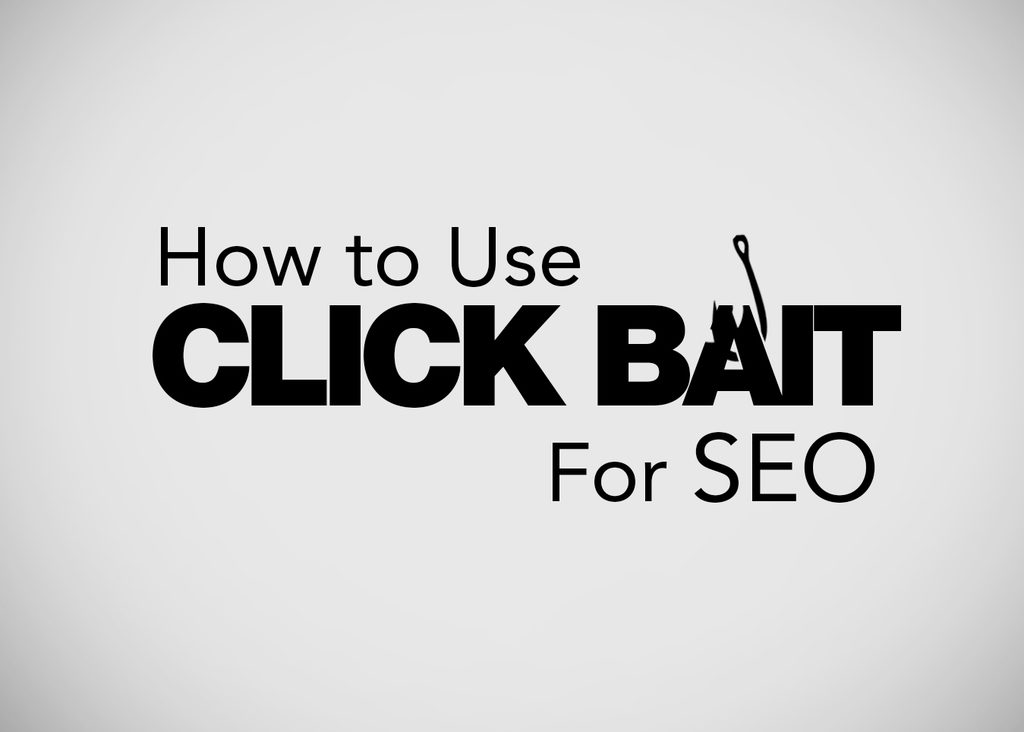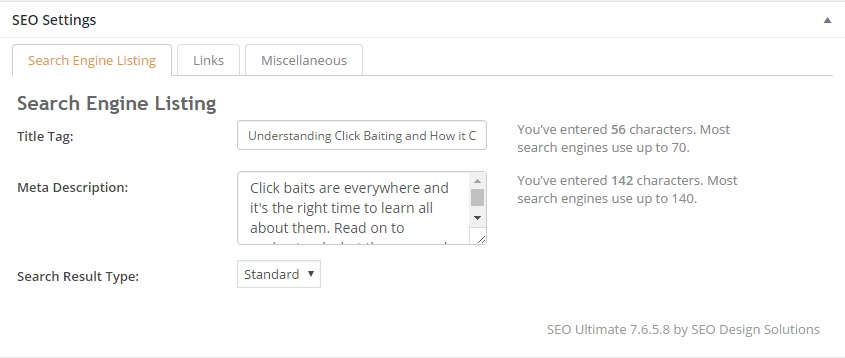How to Use Click Bait Titles for SEO
“You’ll never guess why a certain SEO company decided to do…”
In SEO, one of the most important things that content writers have to take note of are their article titles. In this post, we’re going to be discussing another type of article title which is taking the world by storm – for better or for worse.
I’m certain that you’ve encountered these types of links or posts on your preferred social media service and you may have clicked on them once or twice. These are called click baits and they are designed to prey on people’s innate state of eternal curiosity. Click baits are often posts or links that have either an obscured image or a totally unrelated image as well as a title that is more often than not misleading if not preying on your curiosity and at times, emotions.
What makes click baits so successful is the fact that even if people do know what click baits are, we simply can’t help it at times. There’s actually a research on correlating curiosity and deprivation that pretty much explains why we often relent and click on their links despite knowing the fact that it’s click bait.
The research states that precisely because click bait titles are misleading or mysterious is why people find themselves feeling deprived of the information that they think they need; in turn, people then have a few scenarios they often go through. They either research about the topic themselves, forget about it entirely or relent and click on the click bait – and that is why click bait links are doing so well.
Click Baiting and SEO
In an ideal world, click baiting will solve every problem that an SEO specialist can face. Click baiting can increase rankings and click baiting can garner you more views. In reality, however, click baiting can actually do more harm than good for your SEO.
While click baiting can get you a few clicks and a few visits every now and then, the worst part about click baiting is that you give up the opportunity to include your keyword in your title in exchange for a few words that can pique people’s curiosity and more often than not, that can actually backfire on you.
Does this mean that click baits are bad for SEO? Yes and no. We can actually learn a few lessons from click baiting and we can use those lessons to improve our SEO and by default, the content that we churn out for our websites – which in the long run, is the better thing to do.
Another reason why click baiting is frowned upon is because websites like Facebook are slowly phasing them out. It’s interesting how Facebook find click bait links. They developed their algorithm to measure how long a person takes between clicking on a link, reading the content and then returning or sharing it back on their Facebook walls.
Also worth noting is that from a survey given out by Facebook back in 2014, it stated that 80% of people wanted to see titles that made them want to read the content instead of click baits that preyed on human curiosity. While this information may be 2 years old, I believe that people still want their titles to be direct, informative and help them decide whether or not they want to read the content behind it.
What We Can Learn From Click baits
We’ve established that big name websites are starting to phase out click baits so how can we learn from that is by adapting their good points while refraining from emulating the bad ones. Here are some examples:
-
- “You won’t believe…” – Many click bait links start with this infamous statement. It’s an effective means of capturing people’s curiosity but at the same time it is a double edged sword because it raises their expectations. What we can learn from this is that people are naturally curious so it would be better to put in a title that is informative and at the same time, interesting.Good Example: How we Analyzed and Improved our Term Frequency – Inverse Frequency in 10 Minutes.This is effective because it captures the essence of something that’s unbelievable at first glance but can actually be achieved after reading 10 minutes worth of content that is both meaningful and informative.
-
- “Top 10 list of (insert subject) but wait until you see Number 8.” – Another classic click bait title, this is effective because it combines the effect from number one while adding in an added incentive of a number of other options that may appeal to a broad audience. Not only does this type of title capture people’s curiosity, it also makes people agree simply because of the number of topics or options that they could agree with. Basically speaking, this type of title plays the numbers game and it does it well.Good Example: SEO Don’ts – Things that will make Google Hate you.This is a better alternative because it lets people know what the topic is about while also subtly telling them that it’s a list of things that would make google hate people.
- “Here’s an easy to learn (Subject)…(and it’s not what you think, either.) – We have another manipulative title here that combines that best parts about examples 1 and 2 because it promises information that is uncommon but is actually simple. More often than not, it’s exactly what people expect especially if it’s an article in their specialty or field of interest.Good Example: Broken Link Building Tutorial for Beginners.This is a better alternative for number 3 because it lets people know that it’s a tutorial type of article while getting straight to the point with its subject. It also raises your readers’ expectations and will let them determine whether or not the article is worth reading and sharing.Honest Click BaitsWait, Honest click baits? That sounds like an irony right? Not really. In SEO, there are many techniques that people hone and temper through many instances of trial and error and this is one of mine. Honest click baits are titles that really deliver what they promise. Want a good example? Look no further, the title of this article is an honest click bait! It’s catchy and it’s exactly what the article is all about and if it made you look then it works, right? It’s fine to utilize honest click baits because this is the opposite of what “traditional” click baits really are provided that you can back it up with worthwhile content.Pro TipCreating worthwhile content is the key in utilizing Honest Click Baits. The best result from this is decreasing your bounce rate while increasing your dwell time metrics. When you achieve this feat, you will then be marked by Google as a credible source. It’s a scenario where everybody wins – especially you.Another thing worth noting is that in most blogs, say for example WordPress, SEO Titles can be used differently from Article Titles. In fact, I wrote an in-depth article about this before.
As you can see from the screenshot above, there are numerous SEO plugins you can use for your blog and most of them will look like this. Utilize article titles and SEO titles properly and remember to use Honest Click Baits and you would have completed a good chunk of optimization on the get go.
Key Takeaway
Click baits are only truly effective in the beginning when people were unaware of what they were. People are now more informed and majority of readers will now opt to ignore a title if it seems to be click bait. There is now a negative connotation with regards to click bait titles because some people see it as lazy journalism – and maybe they’re not wrong. It’s not bad practice but it isn’t good practice either. If you’re going to opt for click baiting then the best thing to do is make the content worth reading – and that’s exactly what everybody should do in the first place!
At the end of the day, the title is good for many things but its primary purpose is piquing your readers’ interest. The best practice for SEO content writing is making a decent title that’s good enough to capture your readers’ attention and dazzle them with well-written content. I can give you many examples from SEO Hacker’s website but I believe that it might be better to read some user-submitted guest posts from our Tribe website. Many people from all over the world write informative articles with interesting titles there!

